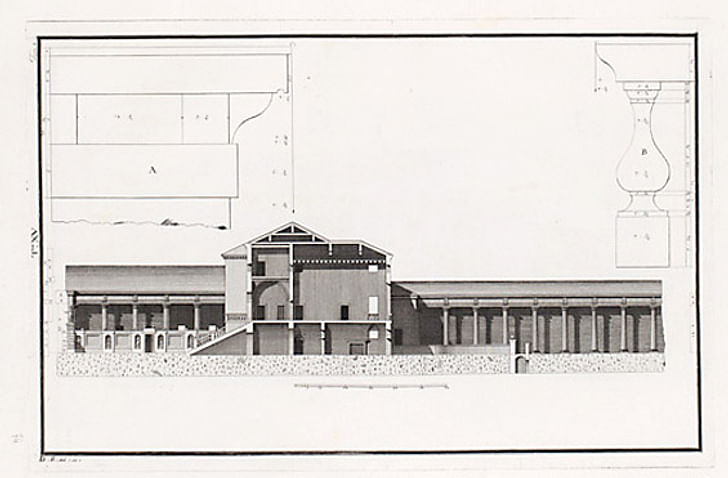

From the Ground Up is a series on Archinect focused on discovering the early stages & signs of history's most prolific architects. Starting from the beginning allows us to understand the long journey architecture takes in even the formative of hands and often, surprising shifts that occur in its journey. These early projects grant us a glimpse into the early, naive, ambitious and at points rough edges of soon to be architectural masters.
La Rotonda, Teatro Olimpico these are just a few of my favorite things. While Palladio is a historical figure and one we all get to know very well through our architectural education, you must wonder where and how it all started. Palladio is the epitome of High Renaissance architecture and the father of polemical architecture whose diagramed objects are the foundation for the contemporary critical project. What would contemporary architecture be without House VI? What would we footnote without Derrida in conversation with Eisenman? Such would be the case if this master had not reached his pinnacle.

Without Palladio, we have no Wittkower and without Wittkower we would have no Eisenman, all traditions start somewhere. So, how did the father of one of today's most influential architectural formulations get his start?
Villa Godi, one of Palladio's earliest, if not his earliest works, is where it all begins. Starting with the Villa, which would become his signature typology, Palladio began his investigations into architecture, symmetry, mathematical spatial organizations and facade logics. While Godi does not contain all the exuberance that Palladio would soon adopt, it is a clear creation of the framework that much of his later work would adopt.

Without Palladio, we have no Wittkower and without Wittkower we would have no Eisenman, all traditions start somewhere.
The Villa as built has some modifications from how it was recorded as Palladio continued to develop the project and represent it as he would have built it if his domain was larger. Later visualizations contained remnants of farm buildings, additional constructs, and elements that were not a part of the built version. The work was commissioned by the brothers Girolamo, Pietro and Marcantonio Godi, started in 1537 and concluded in 1542, with later modifications to the rear entry and gardens.

The building itself, formally at least, is a distant cry from his later work from a simple exterior reading. Palladio creates a large monolithic object consisting of three distinct elements with each specific program clearly separated from the next. From the Villa Godi, Palladio would begin his journey to the architecture that unifies itself with the landscape, with the mathematical virtuosity that he would later cement and have become the foundations of architecture for generations to come.
For more, watch a great video on the master below.
Anthony Morey is a Los Angeles based designer, curator, educator, and lecturer of experimental methods of art, design and architectural biases. Morey concentrates in the formulation and fostering of new modes of disciplinary engagement, public dissemination, and cultural cultivation. Morey is the ...
No Comments
Block this user
Are you sure you want to block this user and hide all related comments throughout the site?
Archinect
This is your first comment on Archinect. Your comment will be visible once approved.